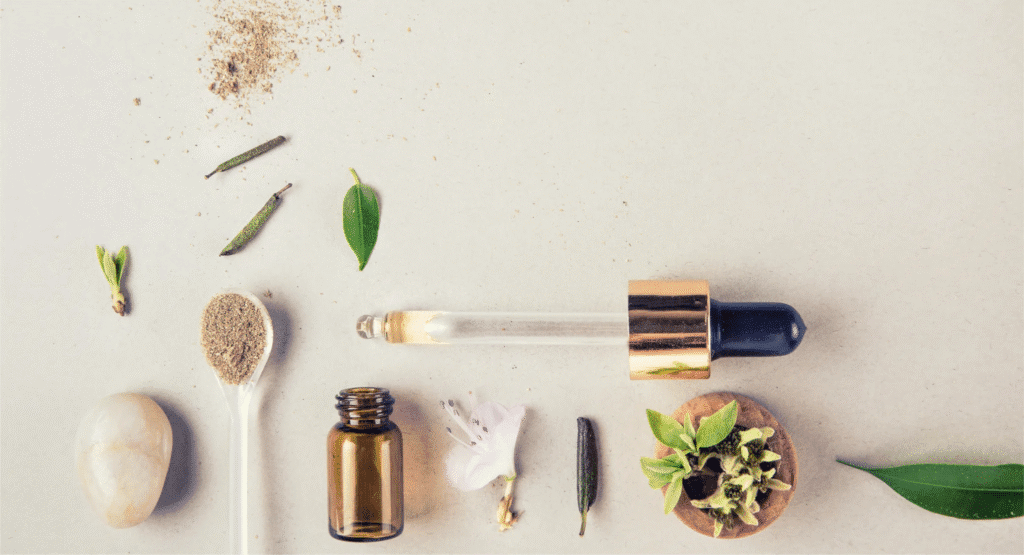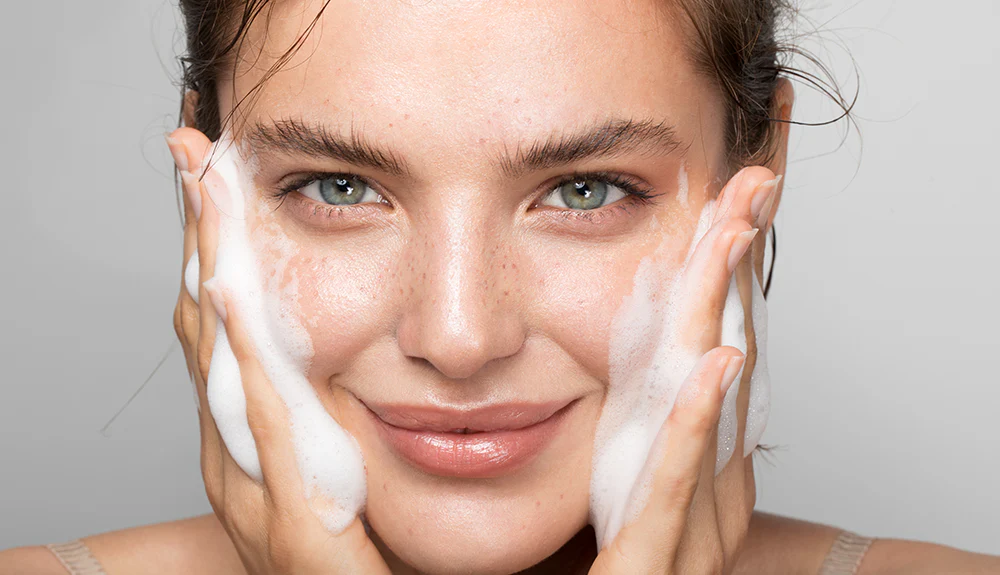A natural skincare routine centers around products made with ingredients from nature—think plant extracts, minerals, and marine-based elements—completely free from harsh chemicals and synthetic additives. With more people embracing gentle, eco-conscious beauty choices, this skincare approach is gaining major momentum. Whether you’re aiming to calm breakouts, combat dryness, or care for melanin-rich skin, it all starts with understanding the right skincare routine order. In this guide, you’ll discover how to build a personalized morning skincare routine using natural ingredients that nourish and protect your skin from the inside out.

What Is Natural Skincare?
There’s no official rulebook for what counts as “natural” in the beauty industry. Each brand can define the term differently. For some, it means using ingredients directly from nature. For others, it includes lab-made ingredients that mimic nature—like nature-identical sorbic acid.
What really matters is understanding where the ingredients come from and how they’re processed.
Quick definitions:
- Naturally occurring: Ingredients used in their raw form (like aloe vera or shea butter).
- Nature-identical: Lab-made but chemically identical to natural ingredients.
- Synthetic: Entirely lab-created, like parabens.
Why Choose Natural Products?
Natural Ingredients Often Offer:
- Vitamins (like A, C, and E)
- Antioxidants (that fight damage from pollution and sun)
- Essential oils
- Hydrocolloids (natural thickeners)
- Proteins and bioactive compounds
These can help strengthen your skin barrier, restore moisture, and support healing—especially important for melanin-rich skin that may be prone to issues like hyperpigmentation, keloids, and acne scars.
Skincare by Skin Type
For Oily Skin
Natural products can balance oil without stripping your skin. Look for witch hazel, tea tree oil, or clay masks that help absorb excess sebum gently.
For Dry Skin
Dryness is common in cooler months or after hot showers. Aloe vera, colloidal oatmeal, and jojoba oil can deeply moisturize and reduce irritation.
For Combination Skin
If your skin is both oily and dry, balance is key. Avoid artificial fragrances and alcohols. Use lightweight serums on oily areas and richer creams on drier patches.
For Acne-Prone Skin
Avoid harsh treatments that cause redness or hyperpigmentation. Instead, try aloe, green tea extract, or honey. These soothe inflammation and help with acne healing without damaging your skin.
For Sensitive Skin
Fragrance-free, dye-free products are best. Gentle ingredients like chamomile, rose water, and colloidal oatmeal help calm irritation.
For Black Skin
Melanin-rich skin is unique. While natural ingredients can help, skin of color can also be more prone to:
- Keloids (raised scars)
- Post-inflammatory hyperpigmentation (dark marks after acne)
- Vitiligo (patches of skin losing pigment)
Be cautious with essential oils or harsh actives. Always consult a dermatologist for concerns like acne keloidalis nuchae, skin cancer, or vitiligo.
Sample Natural Skincare Routine
Morning Routine
- Cleanse
Use a gentle cleanser rich in vitamins A, B2, B12, and E to remove oil and buildup. - Exfoliate (2–3x per week)
Use a soft scrub with oatmeal or rice powder to slough off dead skin. - Tone
Try grape seed, witch hazel, or peach extract toners to rebalance your skin’s pH and tighten pores. - Moisturize
Look for phytoceramides and jojoba oil to deeply hydrate and reinforce the skin barrier. - Protect
Use a mineral-based SPF daily. For darker skin, choose tinted mineral sunscreens to avoid a white cast.
Tip: Apply from lightest to heaviest—serum → moisturizer → SPF.
Night Routine
- Cleanse Again
Remove the day’s dirt, oil, and SPF. - Apply Eye Cream
Use your ring finger to gently pat in a nourishing cream around your eyes—look for peptides or green tea extract. - Night Moisturizer
Choose a richer cream with ingredients like bakuchiol or shea butter to support overnight skin renewal.
Bonus Products to Try Weekly
- Detox Masks: Look for masks with charcoal or green tea for deep cleansing.
- Bakuchiol Serum: A natural alternative to retinol—helps fade dark spots and fine lines without irritation.
Natural Ingredients to Look For
| Ingredient | Benefits |
|---|---|
| Aloe Vera | Soothes sunburn, acne, and irritation |
| Colloidal Oatmeal | Calms dryness and strengthens skin barrier |
| Jojoba Oil | Moisturizes and reduces inflammation |
| Vitamin A | Promotes cell turnover, smooths lines |
| Vitamin C | Brightens skin and fades dark spots |
| Vitamin B2 | Reduces inflammation and protects from oxidative stress |
| Vitamin E | Locks in moisture and shields from sun damage |
What to Know About Labels
Many “natural” terms aren’t regulated. Here’s a guide:
- Organic: Certified by a regulatory body (look for USDA or Ecocert seals).
- Green: Focuses on environmental impact (not always regulated).
- Clean: Often means non-toxic, but varies by brand.
- Vegan: No animal products.
- Cruelty-Free: Product not tested on animals (may still contain animal by-products).
- Fair Trade: Ensures ethical sourcing practices.
Safety Tips
- Check for allergies: Always patch-test a new product.
- Consult your doctor if you’re undergoing cancer treatments. Some vitamins or herbs (like vitamin A or St. John’s Wort) may interact with treatments.
- Watch shelf life: Natural products often spoil faster without preservatives. Store in a cool, dry place and discard if the product changes smell, color, or texture.
- Sunscreen matters: Even natural routines need sun protection. Choose SPF 30 or higher.
Final Thoughts
Natural skincare can be a great choice—especially for people with Black or melanin-rich skin who may want to avoid synthetic ingredients that irritate or discolor their skin. But remember:
- “Natural” doesn’t always mean better or safer.
- Read the labels carefully.
- Start slow and do a patch test.
- Consult a dermatologist for persistent concerns.
With the right products and a consistent routine, natural skincare can support healthy, radiant skin that celebrates and protects your unique complexion.
Also Read : What’s the Deal With Hypochlorous Acid, the Latest Skincare Fad?



